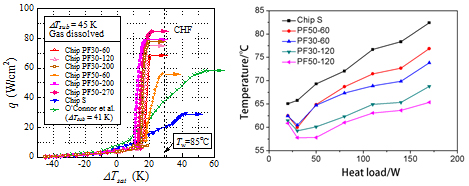Keynote Speakers

Models of evaporation near contact lines
Prof. Vladimir Ajaev
Department of Mathematics, Southern Methodist University
3100 Dyer Str.,Dallas, Texas 75205, USA
ajaev@smu.edu
Vladimir Ajaev is Professor of Mathematics at Southern Methodist University (SMU) in Dallas, Texas, USA. He received his B.S. from Moscow Institute of Physics and Technology (Russia) in 1994 and Ph.D. from Northwestern University in 1999. He conducted postdoctoral research in the Chemical Engineering Department at Stanford University and then joined the faculty at SMU in August 2001. He has given invited keynote lectures on a range of topics in microfluidics and microscale heat transfer at international conferences in France, India, Japan, Russia, China, and the U.S. Prof. Ajaev is a recipient of Alexander von Humboldt Research Fellowship, as well as several teaching awards at SMU. He is the author of 'Interfacial Fluid Mechanics: A Mathematical Modeling Approach' (Springer, 2012).
Abstract
In heat transfer applications, liquid-gas interfaces can come into contact with heated solid substrates. The gas phase can be pure vapor or moist air, leading to different limiting mechanisms for local evaporation rates near contact lines. The lecture will provide an overview of mathematical models of evaporation from the liquid-gas interface in the contact line region and coupling of evaporation and a number of other relevant physical phenomena such as capillarity, viscous liquid flow, London-van der Waals disjoining pressure, Marangoni stresses, diffusion and fluid flow in the gas phase, electrostatic interactions of interfaces, and vapor recoil. The use of models for determination of conditions for maximum possible heat transfer enhancement will be discussed.
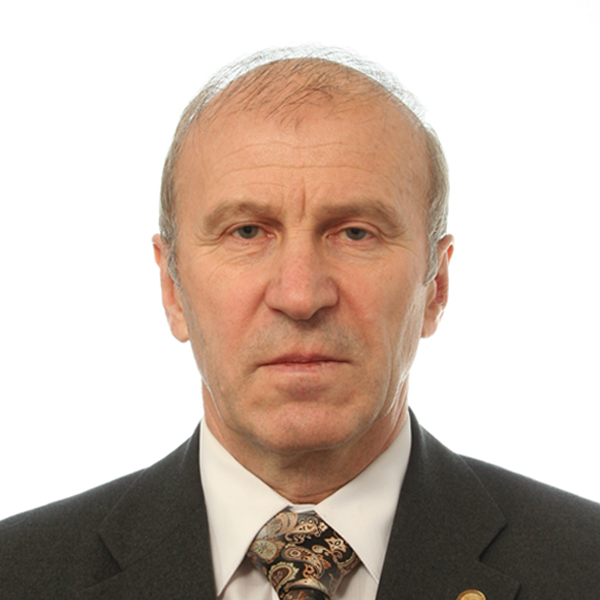
Formation and instability of rivulet flows
Prof. Sergey V. Alekseenko
Academician of Russian Academy of Sciences
Kutateladze Institute of Thermophysics
Lavrentyev Ave., 1, 630090, Novosibirsk, Russia
aleks@itp.nsc.ru
Sergey Alekseenko is a Head of the Department of the Kutateladze Institute of Thermophysics (Novosibirsk, Russia). He is a Professor and Head of Chair of Physics of Nonequilibrium Processes, Novosibirsk State University. He is Academician of Russian Academy of Sciences, member of American Physical Society, Society of Chemical Industry, Scientific Council of ICHMT (International Centre for Heat and Mass Transfer) and EUROMECH. He is a member of Assembly of World Conferences on Experimental Heat Transfer, Fluid Mechanics and Thermodynamics, member of ISMF Governing Board, and member of European Fluid Mech. Conf. Committee. His areas of expertise are the transport phenomena in two-phase flow, hydrodynamics of film flow, wave phenomena, vortex flows and turbulent jets, experimental methods for two-phase flows, power engineering, renewable energy, and energy saving. He has 130 published papers in refereed journals, 29 patents, 6 monographs including Wave Flow of Liquid Films and Theory of Concentrated Vortices.
Abstract
The paper presents results of experimental and theoretical modeling formation and stability of vertically moving rivulets. Both single rivulets flowing on dry plate with existence of contact line and rivulets arising in continuous liquid film are considered. It is shown that rivulet flow is unstable resulting appearance of strongly nonlinear three-dimensional waves. Some peculiarities of wave regimes in the rivulet flow are revealed. The effect of contact angle on wave structure is demonstrated. Besides isothermal flow the case is considered when rivulets in liquid film are formed due to Marangoni instability.

Huge Wave and Droplet Entrainment in Churn Flow
Prof. BoFeng Bai
State Key Laboratory of Multiphase Flow in Power Engineering
Xi’an Jiaotong University, Xi’an, 710049, China
bfbai@mail.xjtu.edu.cn
Dr. BoFeng Bai is a Professor in the State Key Laboratory of Multiphase Flow in Power Engineering at Xi'an Jiaotong University. His research interests are mainly engaged in fundamental studies of multiphase flow and heat transfer and related applications in thermal power engineering and petroleum engineering. He received the Distinguished Young Scientists award from National Science Foundation China. He is also honored Youth Science and Technology Innovation Leader award from Ministry of Science and Technology, China. He published more than 90 peer-reviewed papers in international journals including J Fluid Mech, Phys Fluids, Chem Eng Sci, etc.
Abstract
Churn flow is one of the least understood gas-liquid flow regimes due to its complexity and there have been enduring efforts to define it. Generally, churn flow is considered as an intermediate flow regime between slug flow and annular flow and occurs after the break-down of slug flow as its velocity increases. As it frequently occurs in power plants, chemical engineering, petroleum and other industrial applications, churn flow has a significant influence on the safety and management control. Depth knowledge of the huge-wave properties and entrainment mechanism in churn flow is crucial to provide better understanding of churn flow. To address this, the study was carried out experimentally and theoretically to reveal the mechanisms of the huge wave and drop entrainment in churn flow. Experiment was first introduced to investigate the stability of liquid film and the movement of huge waves. Based on the experimental results, we established analytical models to study the huge wave movement and drop entrainment under churn flow condition, respectively.
The extended abstract is available here.

Vapor-liquid interface: Theory and Applications
Prof. Irina Graur
IUSTI Laboratory, 7343 UMR CNRS, Aix Marseille University
5 rue E.Fermi,13453 Marseille, France
irina.martin@univ-amu.fr
Prof. Irina Graur obtained M.Sc. in applied mathematics in 1984 from Moscow Lomonossov State University. She received a PhD also from Moscow State University in 1989 and the Habilitation from Provence University in France in 2008. Irina Graur was associate professor at Keldish Institute of Applied Mathematics between 1984 and 2000. She is currently professor at Aix Marseille University in France. She has made a number of contributions in the field of rarefied gases for the aerospace research. Her current research interests include the experimental and numerical characterization of the gas properties at micro and nano scales. She heads the research group "Non-equilibrium phenomena and microfluidic". She participated in the organization of a number of international conferences, workshops and summer schools. She has co-authored more than one hundred journal articles and conference papers. She has been Guest Editor for a series of Special issues on Microfluidics appeared in the following journals: Journal Experimental Thermal and Fluid Science and Interfacial Phenomena and Heat Transfer.
Abstract
Modelling of evaporation-condensation, overview of the existing models: continuum, kinetic and molecular dynamics (MD). Implementation and comparison of the kinetic and continuum (Navier-Stokes with the jumps and slip conditions) approaches for the simulation of the flow behavior on the gas-liquid interface.
Hydrodynamics and heat transfer in two-phase gas-liquid flows
Prof. Oleg N. Kashinsky
Head of Laboratory Laboratory of Physical and Chemical Hydromechanics,
Kutateladze Institute of Thermophysics
SB, Russian Academy of Sciences
Novosibirsk, Russia

Prof. Sameer Khandekar
Department of Mechanical Engineering
Indian Institute of Technology Kanpur
208 016 Kanpur (UP)- India
samkhan@iitk.ac.in
Prof. Sameer Khandekar is affiliated to the Department of Mechanical Engineering, Indian Institute of Technology Kanpur, India, since September 2004. He completed Masters Degree from IIT Kanpur (2000) and subsequently earned doctoral degree from University of Stuttgart, Germany (2004). Earlier, he has also worked as a marine power plant engineer on board sea-going merchant vessels for four years (1994-1998). He is a recipient of Kelkar Research Fellowship (2008), DAAD Fellowship (2011), Prof. K. N. Seetharamu Award (Indian Society of Heat and Mass Transfer, 2010), George Grover Medal (International Heat Pipe Committee, 2007) and DAE Young Scientist Award (2005). He is a member of the International Heat Pipe Committee and editorial board member of three international journals. He has served as an invited faculty member at four universities at Germany, France, Brazil and Thailand. He has over fifty international journal research publications, over sixty publications in international conferences, including 15 Keynote lectures/Invited Talks and two books to his credit. His current research interests are in experimental microscale phase-change thermo-fluidic systems, boiling and condensation, heat pipes and energy systems.

Vibrational dynamics of multiphase systems in different gravity conditions
Prof. Tatyana Lyubimova
Institute of Continuous Media Mechanics UB RAS
Computational Fluid Dynamics Laboratory
1, Koroleva Str., 614013, Perm, Russia
lubimova@psu.ru
Professor Tatyana Lyubimova. She was graduated from Perm State University and obtained her PhD degree from Tomsk State University and Doctor of Science degree from Perm State University. She belongs to well-known Perm Hydrodynamical School. Now she is a Head of Computational Fluid Dynamics Laboratory at the Institute of Continuous Media Mechanics Ural Branch of Russian Academy of Sciences and Professor at the Theoretical Physics Department of Perm State University. She works in the field of Microgravity Fluid Dynamics since 1987. Her main research directions are hydrodynamic stability, multiphase flows and vibrational fluid dynamics. She is co-author of the book “Dynamics of Fluid Interfaces in Vibrational Field”. published in 2003 by PhysMathLit., Moscow. She participated in space experiments on Fluid and Material Sciences on European Sounding Rockets, Russian capsule Foton and International Space Station (IVIDIL, DCMIX). She was Vice-Chaiman of the First International Symposium on Hydromechanics and Heat/Mass Transfer in Microgravity, Perm-Moscow, 1991.
Abstract
It is known that the vibrations make strong influence on the behaviour of multiphase systems. Vertical vibrations of high enough intensity could stabilize the equilibrium state of a two-layer system in gravitational field in which more dense fluid is located above the less dense one and horizontal vibrations could create new stable equilibrium state with the inclined fluid interface. In the talk the possibilities to control the behaviour of multiphase systems applying vibrations are analyzed for different gravity conditions. High-frequency and low-frequency vibration effects on the dynamics of gas-liquid and liquid-liquid interfaces, suspensions and emulsions are discussed.

Interfacial phenomena in nanofluids
Prof. Sergey Novopashin
Head of Laboratory of Rarefied Gases,
Kutateladze Institute of Thermophysics
SB, Russian Academy of Sciences
Novosibirsk, Russia
sanov@itp.nsc.ru
Education: M.S.(Physics) - Novosibirsk State University, Physics Department, (1977); Ph.D.(Physics and Mathematics) – Kutateladze Institute, Novosibirsk (1987); Doctor (Physics and Mathematics) - Kutateladze Institute, Novosibirsk (1994).
Visiting professor: 1993, 1996 DLR, Goettingen, Germany; 2004, CERN, Switzerland; 2006, Hong Kong University of Science and Technology; 2006, Germany, Oldenburg, Carl von Ossietzky University Teaching experience: Lecture on "Synergetic" in Novosibirsk State University (1994 - 2002); Supervisor of Ph.D students (1980, 1997, 1999, 2004, 2009, 2013, 2014).
Fields of interest: Turbulence; Nanoscience; Low Temperature Plasma.
Abstract
Nanofluids are the suspensions of solid nanosized particles in a base fluid. The influence of interfacial (fluid-particle) phenomena on thermal conductivity and viscosity of nanofluids will be presented. The role of Kapitza interfacial thermal resistance and joined layer will be under consideration. The conclusion is the interfacial phenomena in nanofluids affect greatly thermal conductivity and viscosity.
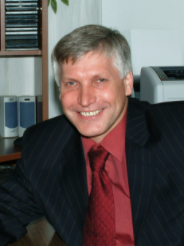
Heat Transfer Enhancement at Boiling and Evaporation on Microstructured Surfaces
Prof. Aleksandr N. Pavlenko
Corresponding Member of Russian Acad. Sci.,
Head of Low-Temperature Thermophysics Laboratory.
Kutateladze Institute of Thermophysics SB RAS.
pavl@itp.nsc.ru
Aleksandr N. Pavlenko is a head of Low Temperature Thermophysics Laboratory at Kutateladze Institute of Thermophysics SB RAS (ITP SB RAS), Novosibirsk (since 1996). A.N. Pavlenko started his research work during his studies in the Department of Physics of Novosibirsk State University (1976-1981) for the diploma practice in the Laboratory of Heat Transfer at Phase Transformations of the Institute of Thermophysics SB RAS headed by Academician S. S. Kutateladze. PhD in Physics and Math. (ITP SB RAS), 1990, DSc in Physics and Math. (ITP SB RAS), 2001. Jr. rschr. Kutateladze Inst. Thermophysics SB RAS, Novosibirsk, 1983-89, sr. rshchr., 1989-96. Contbr. more than 330 articles to profl. jours. and two monographs. His main fields of research are heat transfer, transitional processes and crisis phenomena at boiling and evaporation, interfacial phenomena, distillation on the structured packing. In terms of application main practical achievements of A.N. Pavlenko are bound with the simulation of hydrodynamic and mass transfer processes in the cryogenic packed columns, development of the methods increasing mixture separation efficiency, investigation of heat transfer intensification methods in compact plate-fin heat exchangers. For successful and fruitful cooperation with the largest company of cryogenic machine building Air Products and Chemicals, Inc. (USA) he was awarded with four certificates of honor (2002, 2009). He is Corresponding Member of Russian Academy of Sciences (since 2008), Member of the National Committee for Heat and Mass Transfer NCHMT RAN, Member of the Scientific Council of the International Committee for Heat and Mass Transfer ICHMT (since 2009), Co-editor–in-Chief of the International “Journal of Engineering Thermophysics”, and an Editorial Council member of the Journals “High Temperature” and "Thermal Processes in Engineering". He is member of the specialized council for protection of master's and doctoral theses D 003.053.01 at Kutateladze Institute of Thermophysics SB RAS. Chairman of organizing committees of International workshops with elements of scientific school for young scientists “Topical issues of heat and mass transfer at phase transformations and multiphase flows in modern chemical technology apparatuses and energy equipment” (ISHMI-ISHMVI), Novosibirsk, Russia (2014-2017). The member of more than 40 organizing committees of International and Russian conferences and symposiums. Expert of the Russian Science Foundation (RSF), the Russian Foundation for Basic Research (RFBR), Fund "SKOLKOVO". A.N. Pavlenko is laureate of the S.S. Kutateladze prize of SB RAS; he was awarded with certificates of honor and gratitude of Russian Academy of Sciences (1999, 2007, 2009, 2017) as well as of the Novosibirsk City Hall and the Governor of the Novosibirsk region.
Abstract
The invited lecture presents the results of experimental studies of heat transfer and crisis phenomena at pool boiling and boiling and evaporation in the film flows on the microstructured surfaces. In the first part, there is the comparative analysis of heat transfer efficiency and critical heat flux in the film flows of liquid over a vertical cylinder with the horizontal microtexture, diamond-shaped cut, and mesh covers of various forms (Fig. 1). The mechanisms of heat transfer enhancement at evaporation and boiling at different irrigation degrees are discussed for the used methods of modification of the heat transfer surface. These results are compared with data of other authors obtained for different microstructured surfaces and well-known calculation dependences for the coefficients of heat transfer and critical heat flux.
The second part highlights the new experimental data on heat transfer and critical heat flux obtained at pool boiling with different laws of heat generation in different liquids on new structured capillary-porous coatings produced by directed plasma spraying (Fig. 2). The obtained results show that there are good prospects for using the proposed method of plasma deposition for obtaining coatings with intensified heat transfer at regime of nucleate boiling. It was found out that for the heaters with structured capillary-porous coatings of different thicknesses, there was degeneration of boiling crisis at rapid heating, when the heat fluxes are q < qCHF.
In the third part the experimental and simulation results on rewetting of significantly superheated bodies by the falling liquid films, when the cooled surface is covered by the structured capillary-porous or low heat-conducting coatings, are analyzed (Fig. 3).



A– uncoated plate, Re = 554; B– plate with the coating, Re = 510.

Gas jet deposition of diamond from high velocity gas flows
Prof. Alexey K. Rebrov
Academician of Russian Academy of Sciences
Kutateladse Institute of Thermophysics
Prosp. Lavrentieva 1, 630090, Novosibirsk, Russia
rebrov@itp.nsc.ru
Alexey Rebrov was born 30 of July 1933 in Ukraine. In 1955 graduated with honors Charkov Aviation Institute as engineer of aviation thrusters and worked as assistant and researcher in jet piercing. After post-graduate curses of Kazan Aviation Institute in 1962 defended the thesis on free convection in a rarefied gas and used these results for thermophysical basing of national high altitude astrophysical observatory “Saturn”. 1962 moved to Novosibirsk to work as researcher in the Institute of Thermophysics of the Siberian Branch of Russian Academy of Sciences. There he created large-scale (for Russia and the world) vacuum gas dynamic complex, very well known through achievements in rarefied gas dynamics. His career in the Institute of Thermophysics was: junior, senior scientist, head of rarefied gas laboratory, defence of doctor (habilitation) on gas dynamics of low density jets, head of division of RGD in the Institute of Thermophysics, professor, associated member of Russian Academy of Science, Member of Academy of Sciences (academician), Member of National Committee on mechanics, member of editor board of a few Russian journals. Simultaneously he presented courses in Novosibirsk State University as professor and was the head of the department ”Nonequilibrium processes”. Many years he has been studying heat transfer in rarefied gases, nonequilibrium processes in supersonic and hypersonic flows particularly in jets with rotational, vibrational relaxation , separation of gases and cluster condensation. His inventions of new diffusion pump are known as well. Last time he is involved with enthusiasm in fundamental studying of vacuum technologies, particularly sinthesis of nanosized structures. That is why he is the member of Russian Vacuum Society. Beginning from 1970 (Pisa) and 1974 (Goettingen) he is the regular participant of International Symposia on Rarefied Gas Dynamics. From 1974 is permanent member of International Advisory Committee of RGD. In 1982 in Novosibirsk he has organized successful Simposia, where many outstanding scientists were present, including Nobel Prize Prof. J. Fenn. He was co-chair with Prof. M. Ivanov of 26th RGD symposium in Saint-Petersburg. He has more than 250 publications. He is leader of scientific school in RGD; was mentor of 33 scientists who defeated PhD; 12 of them became professors, one is Academician of Russian Academy of Sciences.
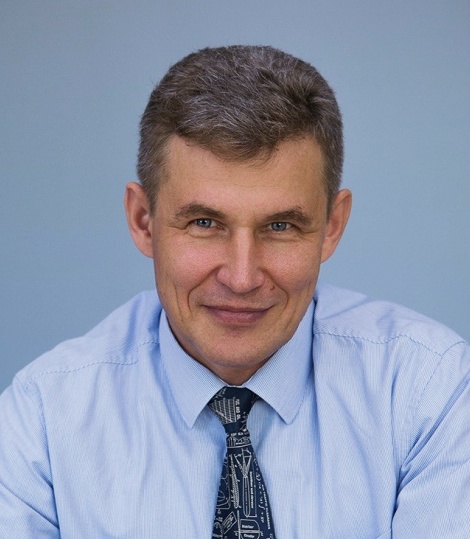
Passive Highspeed Boundary Layer Transition Control Using an Ultrasonically Absorptive Coating
Prof. Aleksandr N. Shiplyuk
Corresponding member of Russian Academy of Sciences
Director of Кhristianovich Institute of Theoretical and Applied Mechanics SB RAS
Institutskaya str., 4/1, 630090, Novosibirsk, Russia
shiplyuk@itam.nsc.ru
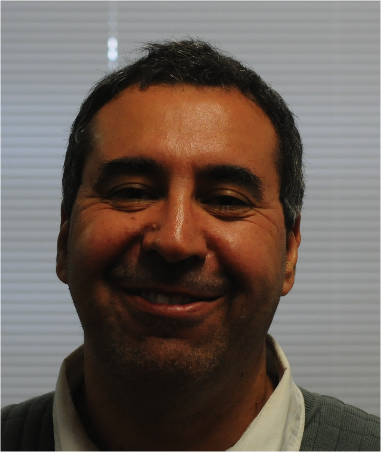
Prof. Lounès Tadrist
AMU–CNRS Laboratoire IUSTI UMR 7343
Engineering School Polytech Marseille, Aix Marseille University
Marseille, France
lounes.tadrist@univ-amu.fr
Lounès Tadrist is professor at Aix-Marseille University. His research activities are Heat and Mass Transfer, of Phase change phenomena, two-phase flows and Interfacial phenomena and hydrodynamic instabilities. His teaching activities are in the field of Thermodynamic, heat transfer, Energy and Systems, heat exchangers, fluidized beds, porous media. He received his master degree in physics in 1978 in Algiers University. In 1981 he obtained his PhD in Thermal engineering at University of Provence and his habilitation in physics in 1987 in the same University. He started his carrier at the Scientific National Research Center (CNRS) as a researcher. He moved to Aix-Marseille University as Professor since 2005. Since 2008 he is the head of the Laboratory IUSTI (Institut des Systemes Thermiques Industriels). In 2013 he is the coordinator of the Interdisciplinary research pole on Energies at Aix-Marseille University.

Boiling Heat Transfer Enhancement by Using Micro-pin-finned Surfaces and Its Application in a Novel Loop Heat Pipe.
Prof. Jin-Jia Wei
State Key Laboratory of Multiphase Flow in Power Engineering
School of Chemical Engineering and Technology
Xi’an Jiaotong University
Xianning West Road 28, Xi’an 710049, CHINA
jjwei@mail.xjtu.edu.cn
Jinia WEI is a professor of Xi’an Jiaotong University and the dean of School of Chemical Engineering and Technology. He is the council member of Chinese Society of Engineering Thermophysics, and is also the editorial member of 5 international journals. He got degree of Dr. Eng. from Xi’an Jiaotogn University in 1998 and PhD from Kyushu University in 2002. His research interests include enhancement of boiling heat transfer for ground and space application, two-phase/drag-reducing flow and heat transfer, solar thermal Utilization and solar voltaic/thermal hybrid utilization. He published more than 200 papers, gave more than 10 invited talks in international conferences, and got two first-grade ministerial or provincial level science and technology awards and an Excellent Young Scholar Award of WU Zhong-Hua Fund from Chinese Society of Engineering Thermophysics. He is the Cheung Kong scholar chair professor of Ministry of Education, and also the winner of national natural science fund for distinguished young scholars.
Abstract
With rapidly increasing power dissipation rate for electronic components, sophisticated electronic cooling technology is required to maintain relatively constant component temperature below the junction temperature, approximately 85 oC for most mainframe memory and logic chips. Boiling heat transfer with latent heat release in the phase change process is considered as the promising scheme for cooling high heat flux electronics. Experiments were conducted to study the boiling heat transfer performance of FC-72 over square silicon chips with the dimensions of 10×10×0.5 mm3. For enhancing boiling heat transfer, four kinds of micro-pin-fins with the dimensions of 30×60 (PF30-60), 30×120(PF30-120) , 50×60(PF50-60) , 50×120 (PF50-120) μm2 (thickness, t × height, h) were fabricated on the chip surfaces by the dry etching technique. A smooth surface was also tested for comparison. All micro-pin-fined surfaces have considerable heat transfer enhancement compared to a smooth surface, and the boiling heat transfer can be enhanced by increasing total surface area. It was found that the capillary force generated at the vapor-liquid interface of a large bubble sitting on the micro-pin-fins could drive a plenty of bulk liquid to access the heater surface easily for evaporation through the regular interconnected structures formed by the micro-pin-fins, leading to high boiling heat transfer performance. The micro-pin-finned surfaces were also tested in microgravity provided by Drop Tower Beijing, and the boiling heat transfer enhancement is still obvious. The boiling heat transfer performance is closely related to bubble dynamics, and a new bubble detachment model was proposed to predict the bubble departure diameter on the micro-pin-finned surfaces in microgravity by considering the additional drag force of small bubble groups underneath the large departing bubble, and the prediction agrees well with the experimental data. The micro-pin-finned structures were further applied in a novel loop heat pipe (NLHP), in which the evaporator was only used for generating capillary force to drive the fluid circulation in the loop, and an additional boiling pool was used for main heat dissipation. It was found that the micro-pin-finned structures can enhance the boiling heat transfer in the boiling pool, and thus reduce the thermal resistance of the entire loop heat pipe greatly.
